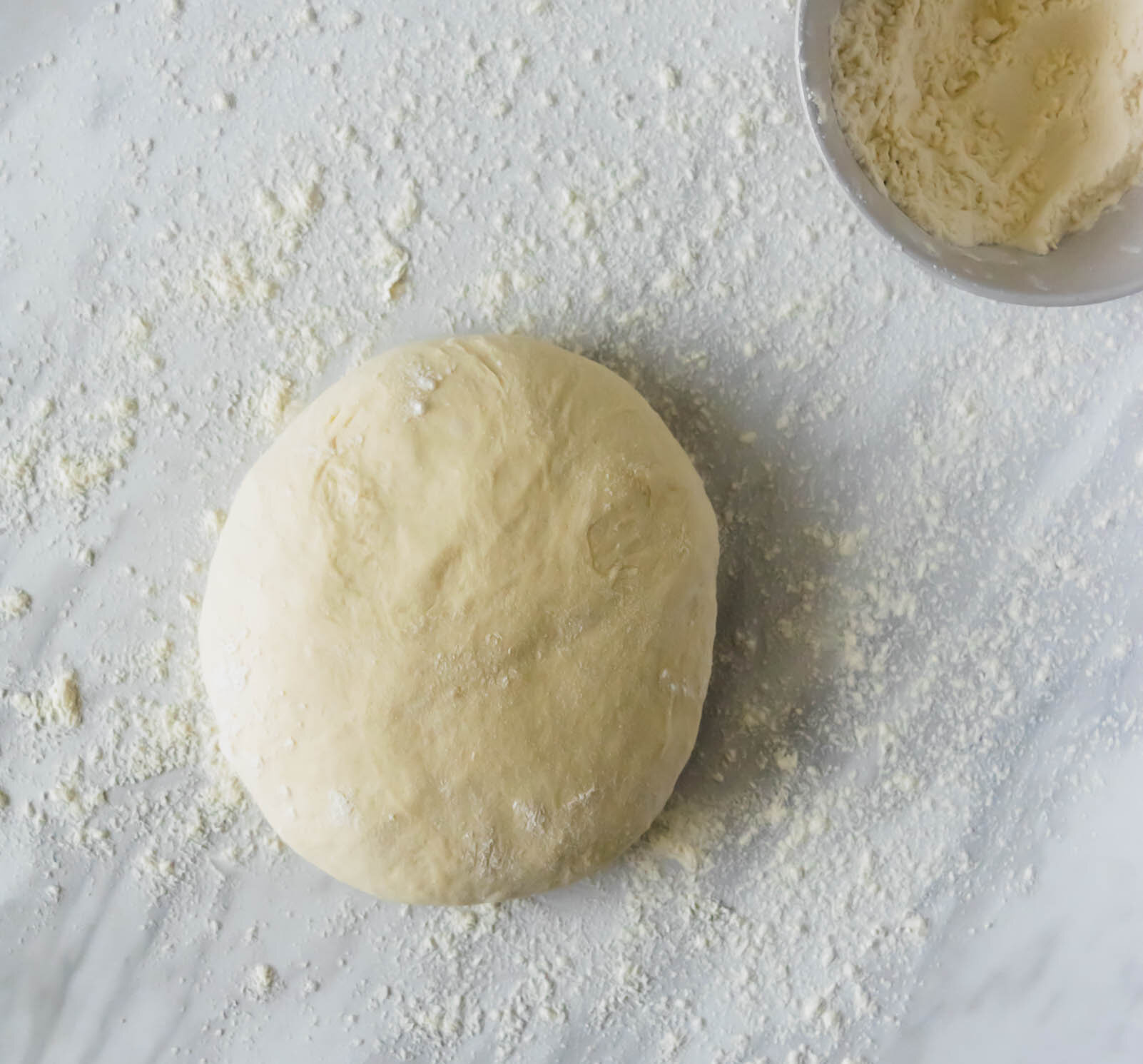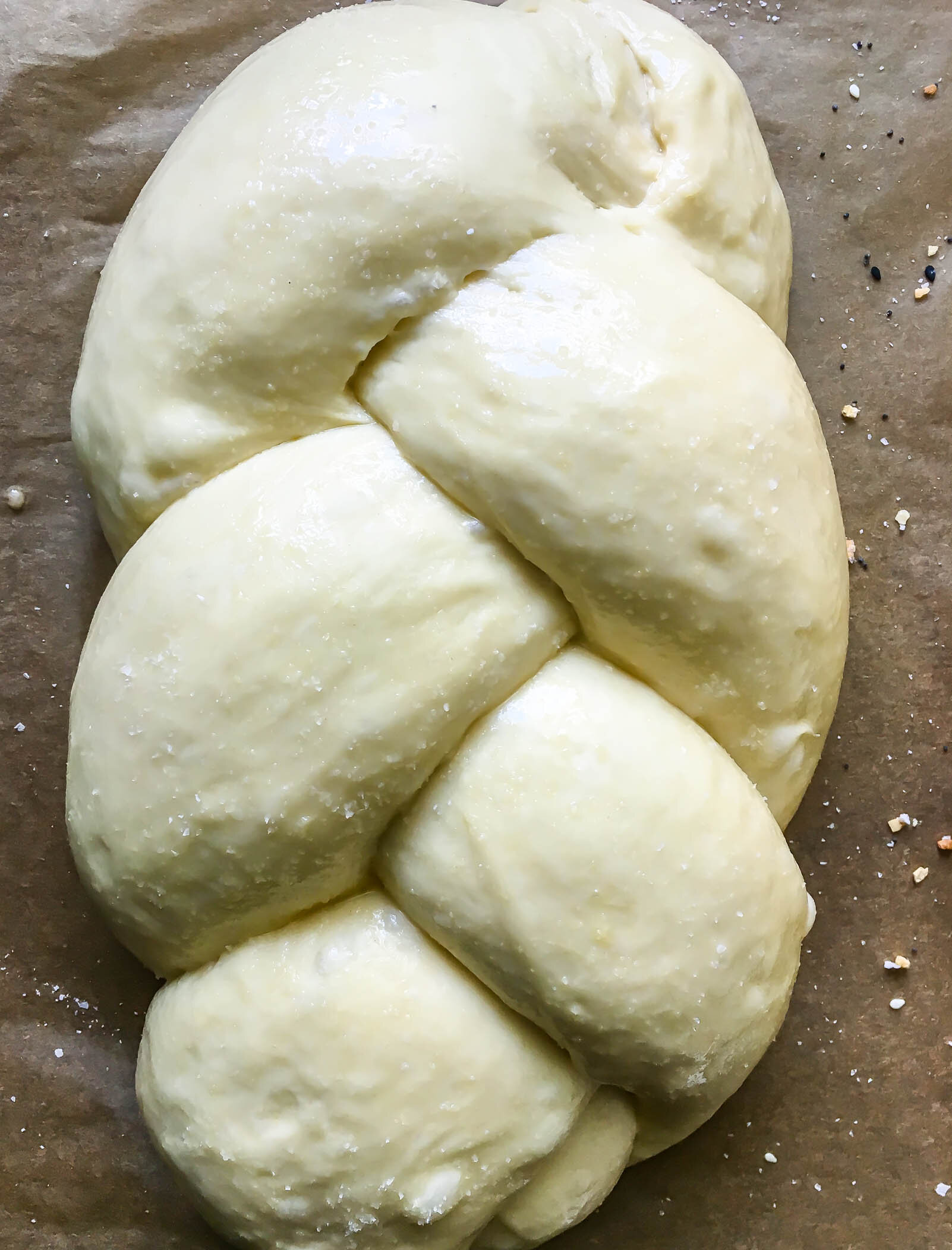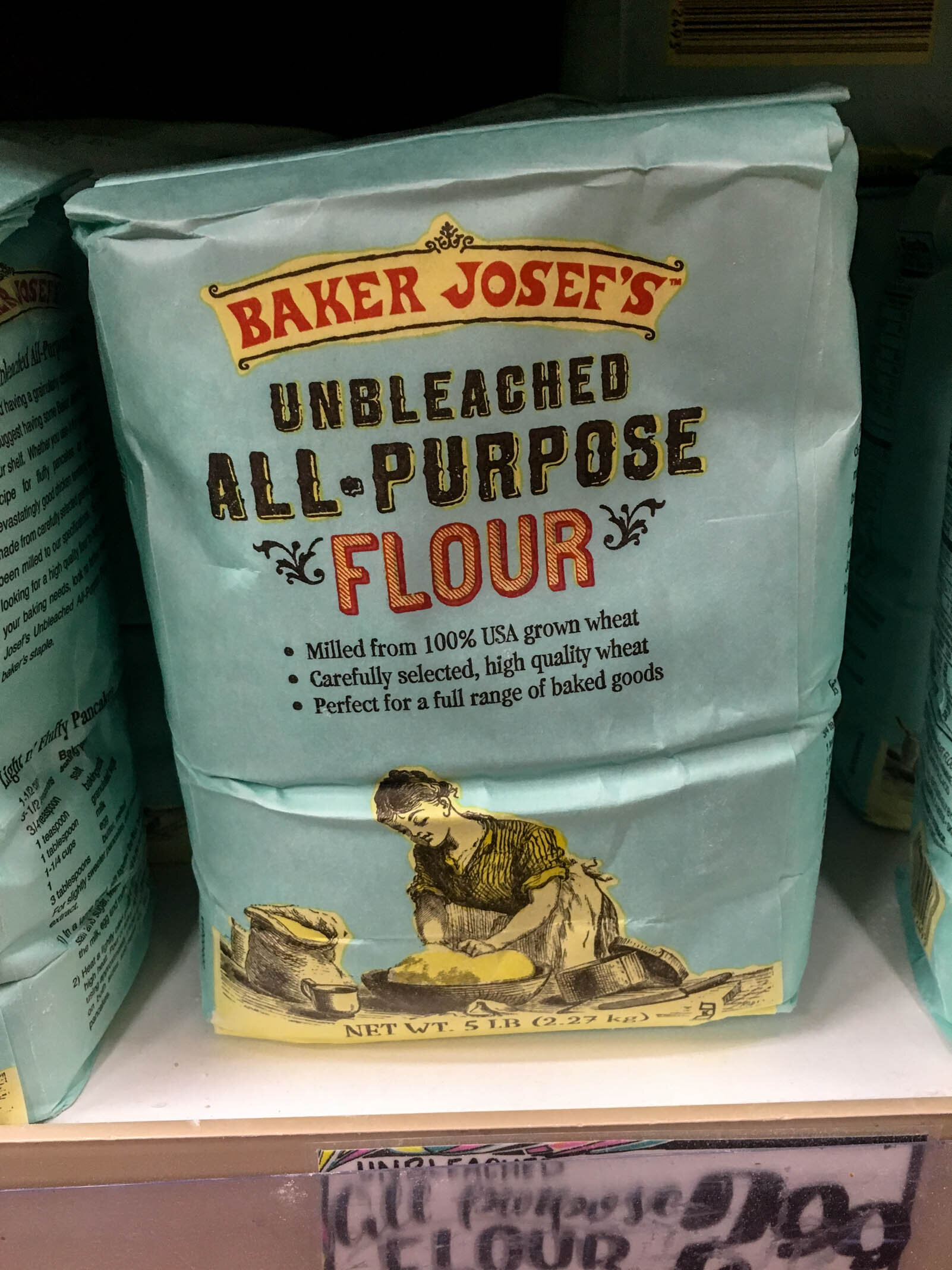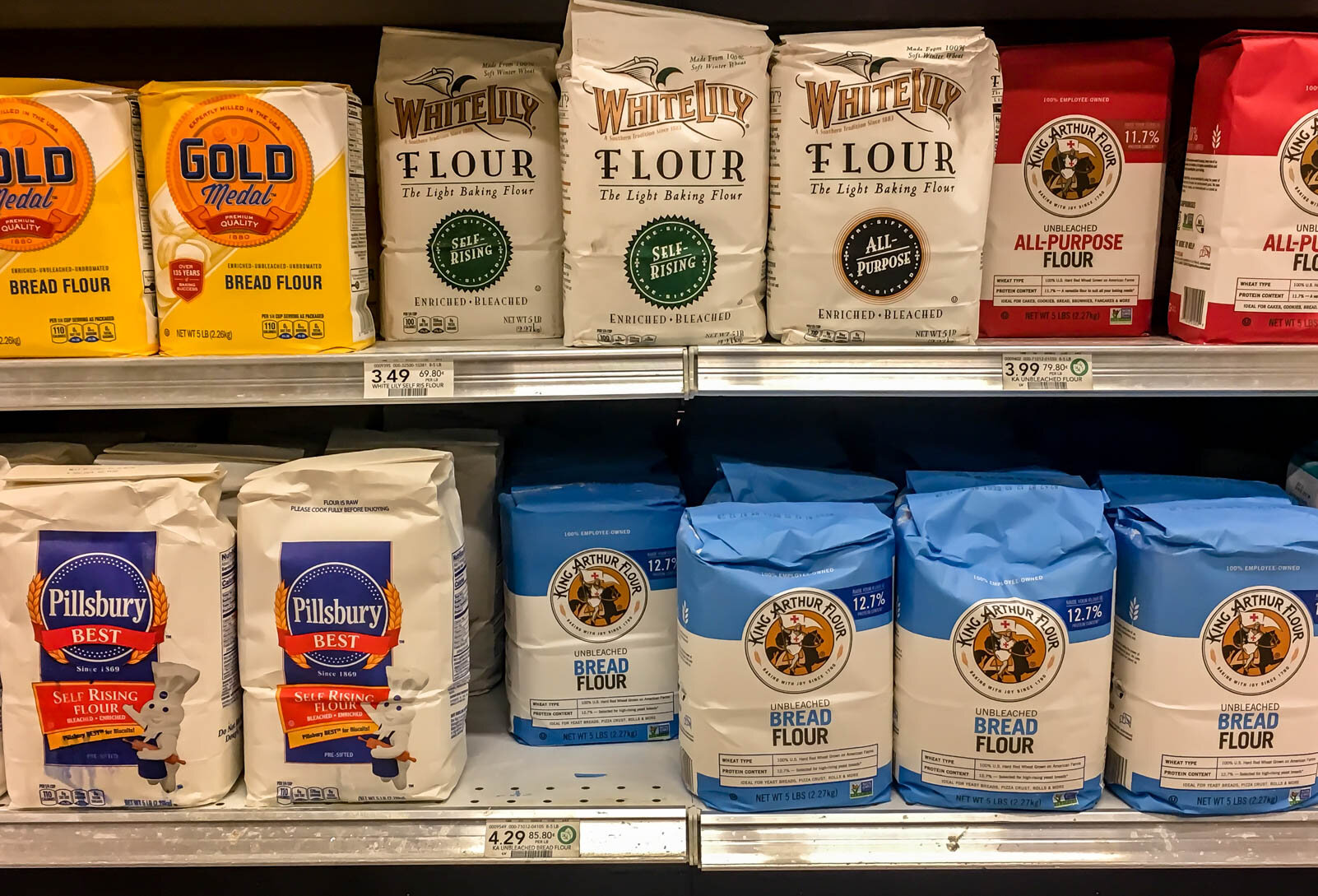Ingredient Spotlight: Flour
/If you’ve ever taken a stroll down the baking aisle of your local grocery store, you’ve probably noticed there are close to a billion different types of flour (I might be exaggerating a smidge, but there are definitely a lot). You have also probably cooked from a recipe that has a measurement listed as “one cup of flour” and you’ve thought to yourself “What kind of flour am I supposed to use?” Or “Aren’t all flours the same?” Well, let’s answer those questions!
I have been wanting to write about this for a long time because understanding flour is empowering. Once you understand what exactly flour does in a recipe, what all the different types are, and you know how to read a bag of flour, the culinary world is your oyster, so to speak. You have the power not only to follow a recipe and understand it, but you have the freedom and know-how to change a recipe to suit your needs. You can begin to stretch your baking muscles and even create your own recipes. So take a peak at the flours in your pantry, pull up a chair, and let’s start from the beginning.
What is flour?
For the purpose of our little lesson here, we will only be talking about wheat flour, meaning flour that comes from the wheat plant (not necessarily whole wheat flour). We will leave those specialty flours like buckwheat, spelt, and kamut for a later discussion. The part of the wheat plant that gets milled into flour is called the wheat kernel, or wheat grain. A wheat kernel looks like a cute little oval seed and it is made up of three different parts: the bran, the germ, and the endosperm.
-The bran is a protective layer that covers the outside of the wheat kernel and is usually darker in color than the endosperm. It is high in dietary fiber, which is why you will see “wheat bran” on the shelves of the grocery store that can be added to foods for a little fiber boost. The bran does not form gluten, adds a dark rustic appearance, and imparts a slightly nutty flavor.
-The germ is the embryo of the wheat kernel and in the right conditions, can sprout into a new plant. It is full of nutrients, but also does not form gluten.
-The endosperm is the largest part of the wheat kernel. It makes up around 80% of the kernel and is the whitest part of the kernel, mostly because of its high starch content. The starch in the endosperm is embedded in chunks of protein. There are two different proteins located in the endosperm, glutenin and gliadin, and when mixed with water, these proteins form the all-important gluten.
A note on whole wheat flour:
All flour that comes from the wheat kernel is considered wheat flour. The most common white-colored flour found on the shelves of grocery stores and in white-flour products is made from milling just the endosperm of the wheat kernel. Remember that the endosperm is mostly white in color due to its starch content, so it’s naturally a whiter flour. Whole Wheat flour is made using the entire wheat kernel (bran, germ, and endosperm), which provides extra nutrients, but doesn’t always work the same way in baking due to its lowered ability to form gluten (because of the addition of non-gluten forming bran and germ). The inclusion of the bran and germ also gives whole wheat flour its signature rusty color.
Whew. That feels like a lot of science, but let’s look practically at what exactly that all means when it comes to the role flour plays in baking.
What role does flour play in baking?
Flour does a number of different jobs in baking, but its primary function is the development of gluten. If we go back to those proteins in the endosperm, you’ll remember that when glutenin and gliadine come in contact with water, they develop the ability to form gluten. When you apply hydration and friction (or mixing), these proteins form gluten strands that essentially bind your baked goods together and give them structure. (This is why if you are making a bread dough, you can stretch the dough to determine whether enough gluten has been developed). Flour also contains a significant amount of starch, which helps to absorb liquid in a dough or batter and which also provides sugar to aid in fermentation.
What are the different types of flour and when do I use them?
Flour is made from six different types of wheat- hard red winter wheat, hard red spring wheat, hard white winter wheat, durum wheat, soft white winter wheat, and soft white spring wheat. These names refer to the types of wheat kernels and how they are grown and cultivated.
Hard wheat kernels are able to withstand harsh winters, have a greater amount of protein, and high water absorption. Soft wheat kernels are cultivated in less harsh winters, have lower amounts of protein, and have a higher proportion of starch. Basically, the flour source depends on your final product. If you are making a rustic sourdough bread where gluten structure is of upmost importance, you would use flour milled from a hard wheat. If you are making a cake, where tenderness and moisture are desired, you would use flour milled from a softer wheat.
The 5 main types of flour
These are what you see in the aisles of grocery stores and the major difference between flour types is the fluctuation of protein levels.
Higher protein content = higher gluten development ability.
High Gluten Flour: High gluten flour is often found in commercial bakeries and it is used primarily for bread making. You will have trouble finding this type of flour on the shelves of your local grocery store and would find it in a specialty store or online. Its protein levels typically range from 13%-15%.
Bread Flour: Bread flour forms good quality gluten due to its higher protein levels and is milled from hard wheat kernels. You can usually find it bleached or unbleached and bread flour contains protein levels that range from 11%-13%.
All-Purpose Flour: All-purpose flour is milled from a combination of hard and soft wheat and typically ranges from 9%-11% protein content. Because of it’s versatility and mid-range protein content, it’s the most common type of flour and can be used across a variety of applications.
Pastry Flour: Pastry flour typically has a protein content of 7%-9% and is milled from soft wheat. It is not usually bleached and its low protein levels make it good for use in things like pie crusts, laminated pastries, and cookies.
Cake Flour: Cake flour has the lowest protein levels of any of the various flour types coming in at 6%-8%. It is milled from soft wheat kernels, comes from the very heart of the endosperm, and has a higher starch content than any other flour. It is often bleached and is used in applications where tenderness is desired, like cakes.
What about self-rising flour? Self Rising Flour is a softer all-purpose flour that already has baking powder and salt added. I would only use self-rising flour if a recipe specifically calls for it. If you choose to substitute self-rising flour for all-purpose flour, you will need to adjust your baking powder and salt levels accordingly.
Reading the labels
Two words show up a lot on flour labels: bleached and enriched. But what do they mean? And are they good or bad?
Let’s talk about bleaching first.
Freshly milled flour is exposed to chlorine gas or benzoyl peroxide which makes the yellowish hued flour bright white in color. It also provides a better chance for air or carbon dioxide to become trapped in gluten webs which can result in better volume and texture. It also can diminish nutritional value and can interfere with bacteria development when working with wild yeast and starters.
Enriched Flour
Enriched flour is flour that has been supplemented with conditioners to increase gluten production and improve overall baked good quality. Millers add potassium bromate, ascorbic acid, and diastase to the newly milled flour. A flour with potassium bromate added can also be called “bromated” and it’s a chemical that has been banned in Canada and Europe because it’s now considered carcinogenic. Ascorbic acid is added to improve and strengthen gluten, and diastase is an enzyme that is naturally occurring in flour, but is damaged during milling so it often gets added back in.
Whether you decide to use bleached and enriched flour is a choice entirely up to you, as bleached and enriched flours are often cheaper. I personally like to use flours that are not bleached and enriched. Whatever you decide, it’s important to remember that bleaching and enriching may affect the quality of your baked goods and bleached flour should not be used when working with wild yeast applications, like sourdough.
How do I pick the right flour? and some practical applications
If you are a casual baker, sticking to the occasional cookie and brownie, all-purpose flour will usually be sufficient for you. It’s nice to keep a box of cake flour around for the cake or cookie recipe you will stumble upon that calls for it. If you are dabbling in any sort of bread baking, I would also recommend keeping bread flour on hand. You will definitely need it.
Find a brand or two that you like and stick with it. I prefer King Arthur Flour. They always produce high-quality flour, don’t bleach or enrich their products, and include the protein content right on the label so I always know what I’m working with. I also like White Lily flour, which has a bit lower protein levels, for things like cakes and biscuits.
If you purchase whole wheat flour and don’t use it on a regular basis, store it in your freezer. Whole wheat flour contains the wheat germ, which contains fat and can go rancid if left in the pantry for long periods of time.
To sift or not to sift? I strongly encourage sifting when you are using cake flour or cocoa powder. The high starch content in both of these causes little clumps that are hard to break up without sifting. Otherwise, you probably don’t need to go through all the trouble of sifting. Just take a fork and give your flour a quick fluff if it looks a little clumpy.
Consider your desired results when selecting a flour. Do you want strong gluten structure? Do you want a soft and tender crumb? Decide what role you need the flour to play in your recipe and choose accordingly.
I know this was an exceptionally long read so congratulations for making it all the way through! I hope that you learned a few things that will help in your future baking endeavors. Please comment any other questions you may have.









